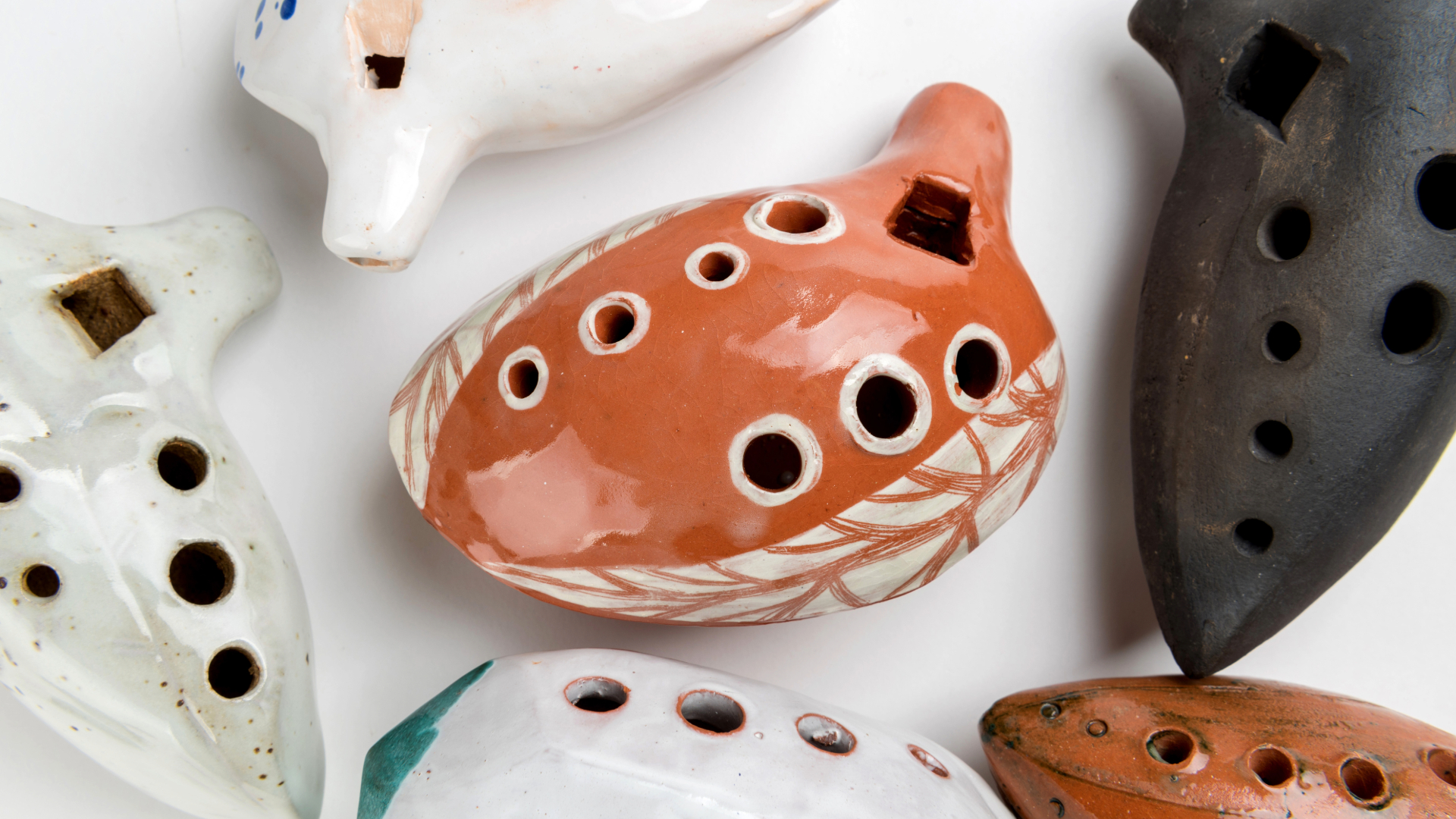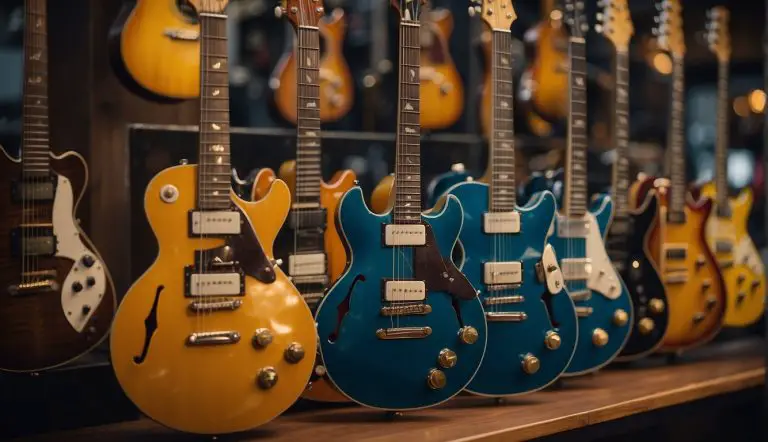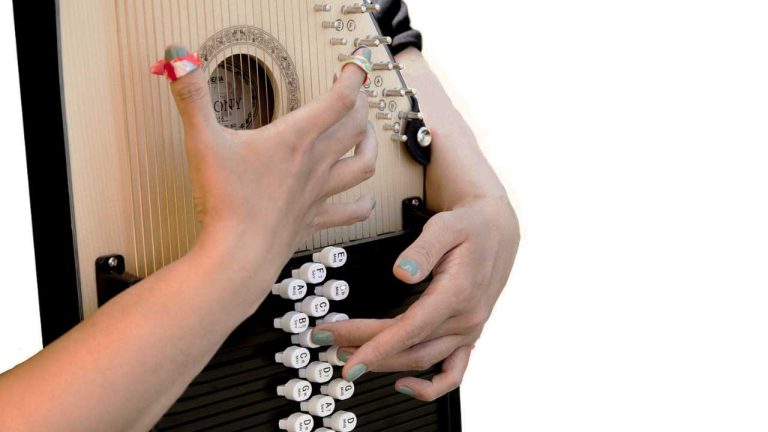Is It Easy to Learn the Ocarina? Unveiling the Musical Journey
Folkstrings.com is reader-supported. When you buy through links on our site, we may earn a small commission.
Learning to play the ocarina, a unique wind instrument with a rich history, can be a delightful experience. Its charming sound and relatively straightforward fingering system make it accessible to beginners.
Unlike most wind instruments, the ocarina’s shape and size are quite manageable, allowing new players to grasp the basics without the steep learning curve associated with some other instruments.
The learning process is facilitated by the integration of technology, there is tonnes of info to be found in places like YouTube.

While the ocarina is accessible to beginners, it also offers a depth of skill mastery for those interested in advancing their playing. As with any musical instrument, consistent practice is key to improvement.
The initial ease of picking up the ocarina does not mean that it lacks complexity. Mastering breath control and finger techniques to play more intricate pieces takes dedication and time.
Careful selection and maintenance of the instrument also contribute to the quality of the learning experience, enabling players to enjoy the ocarina’s full potential.
Key Points
- The ocarina is a beginner-friendly instrument with a simple fingering system.
- Mastery of playing the ocarina requires consistent practice and dedication.
- Proper selection and maintenance of the ocarina enhance the learning experience.
Ocarinas for Beginners – My 3 Top Picks
When I first ventured into the world of ocarinas, the variety of options was quite overwhelming. So, I’ve curated a list of my top three beginner-friendly ocarinas readily available on Amazon.com, to help you get started on your musical journey.
- Ohuhu 12-Hole Ocarina
- Key: C majorMaterial: CeramicFeatures: Sweet tone, comes with a songbook and protective bag
- Night by Noble Plastic Ocarina
- Key: Alto CMaterial: PlasticFeatures: Durable, moisture-resistant, and has a mellow sound
- AILI 6-Hole Mini Ocarina
- Key: Alto CMaterial: CeramicFeatures: Compact size, easy to learn finger placement
Basics of the Ocarina
In this section, I’ll introduce you to the ocarina, guide you through the different types, and help you play your first notes. The ocarina’s unique sound and playing technique make it a fascinating wind instrument for beginners.
Understanding the Ocarina
The ocarina is a type of wind instrument known for its ease of learning and sweet, ethereal sound. Unlike many wind instruments, it doesn’t require a complex embouchure—it’s often seen as accessible for beginners. The sounds are produced by the flow of air across the holes, which can be uncovered individually or in combination to create different pitches.
Types of Ocarinas
Ocarinas come in various shapes and sizes, each offering its own range and tonal qualities. Key types include:
- Four-hole ocarina: Ideal for beginners, capable of a limited range of notes, but easy to learn.
- Six-hole ocarina: Offers more pitch options than the four-hole, making it a good step up as you advance.
- 12-hole ocarina: A standard for serious players, provides a wide range of notes and dynamic possibilities.
Playing Your First Notes
To start playing your ocarina:
- Hold the instrument properly: Typically, the thumb holes are at the bottom and the finger holes are on top.
- Learn to breathe steadily: Even, controlled breaths will help produce clear notes.
- Begin with simple notes: Practice uncovering one hole at a time to understand the pitch changes.
- Progress to scales: Once you’re comfortable, move on to playing scales to familiarize yourself with the ocarina’s note range.
Learning to Play
When I first picked up the ocarina, I realized the simplicity in its design belies the depth of skill involved in learning to play it well. I’ll walk you through mastering finger positions, controlling your breath, and reading music specifically tailored to the ocarina.
Mastering Finger Positions
I found that getting the hang of the correct finger positions is crucial for producing the right notes. The ocarina usually has 10 to 12 holes, each contributing to different notes when covered or uncovered. Here’s a basic rundown of the finger placement for a typical 10-hole ocarina:
- Thumb holes (2): Located at the bottom. Cover them for the base notes.
- Index to Pinky fingers (8): Four on each side for the chromatic notes.
Regular practice is key to muscle memory, which allows for smooth finger movement between notes. It’s best to begin with simple tunes that require minimal finger shifts before progressing to more complex pieces.
Breath Control and Techniques
Managing my breath control was another important aspect of learning. The force at which I blew into the ocarina altered the pitch and volume, so consistent breath pressure was necessary to maintain a steady tune. Here are some tips for breath control:
- Steady exhales: Maintain a consistent flow of air to keep the tune even.
- Dynamics: Alter the strength of breath for soft and loud notes, known as piano and forte.
Breath control techniques need regular practice, much like fingerings, and the best way to improve is to play scales and simple songs, paying attention to the nuances of each note.
Reading Music and Tabs
Initially, reading sheet music for the ocarina felt daunting, but I was thankful for the availability of tablature (tabs), which are visual representations of where to place your fingers on the ocarina. They lay out which holes to cover for each note, much like reading a diagram.
Here is what a basic tab might look like for the note C:
---|---O---O---
| O O
---|-----------
| O O
---|---O---O---
“O” represents an open hole, and a filled or marked hole means it’s covered. Many beginners’ resources provide tabs instead of traditional music notation, making it easier to jump right into playing tunes.
For those more accustomed to standard sheet music, the ocarina uses the same musical notations. Transitioning from tabs to sheet music is a smooth process once you’re familiar with where the notes lie on the staff and how they correlate to finger positions and breath control.
Advancing Your Skills
When I talk about advancing skills on the ocarina, it’s not just about hitting the right notes. It involves building muscle memory, tackling complex melodies, and injecting expression into the music. It’s rewarding to see how musicality can grow with practice and attention to the nuances of playing this unique instrument.
Developing Muscle Memory
I’ve found that regular practice is crucial for developing muscle memory. Starting with simple scales and gradually increasing difficulty ensures a solid foundation. Here’s how I approach it:
- Start with the Basics: I practice the major and minor scales daily to familiarize my fingers with the ocarina’s layout.
- Stay Consistent: I dedicate specific practice times each day to create a routine, reinforcing muscle memory.
Playing Advanced Melodies
To play advanced melodies, I focus on understanding rhythm and melody. Here’s my process:
- Learn the Rhythm: I use a metronome to master the timing of complex rhythms, ensuring I can maintain a steady beat.
- Combine Rhythm and Melody: After getting a handle on the rhythm, I introduce the melody, aiming for precise note transitions and accuracy.
Expressive Techniques
Expression brings life to music. Here’s how I add expression to my ocarina playing:
- Vibrato: By varying my breath pressure, vibrato adds a rich, dynamic quality to sustained notes.
- Dynamics: Playing with different volumes helps evoke emotions and tell a story within the melody.
Ocarina Selection and Care
When I choose an ocarina, I consider not only the material and craftsmanship but also how to maintain it properly. This way, my musical companion stays in tune and lasts a long time.
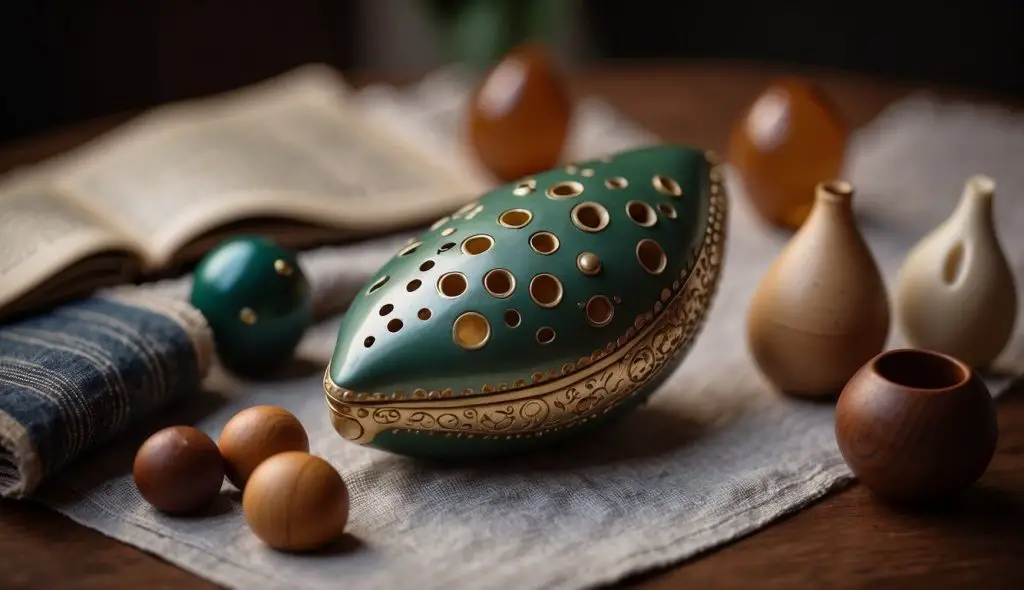
Material and Craftsmanship
In my experience, ocarinas are typically made from either ceramic or plastic. The material affects both the instrument’s durability and its sound quality.
Ceramic ocarinas offer a rich and warm tone, which I find suitable for intimate settings and recording. They come in different sizes like soprano, alto, and tenor, each producing a different range of pitch. The soprano is the smallest with the highest pitch, while the tenor is larger with a deeper tone.
On the other hand, plastic ocarinas are more durable and less prone to damage, which makes them a great choice if I’m traveling or taking my ocarina outdoors. Plastic ocarinas are also generally more affordable, making them an ideal option for beginners like myself when I was first starting out.
Maintaining Your Ocarina
Caring for my ocarina ensures it continues to produce beautiful music and remains in good condition. I follow a few straightforward steps:
- Keep it clean: For my ceramic ocarina, I use a soft cloth slightly dampened with water to wipe away fingerprints and dust. I avoid using chemicals or soaps which can harm the finish. For plastic ones, mild soap and water are usually safe, but I make sure it’s thoroughly dried after cleaning.
- Handle with care: Even though my ocarina might feel sturdy, I handle it gently to avoid chipping or cracking, especially the mouthpiece and the finger holes.
- Storage: I store my ocarina in a padded case when not in use to protect it from bumps and scratches. Sudden changes in temperature and humidity can also affect the tuning, so I keep it in an environment with stable climate conditions.
Cultural and Historical Context
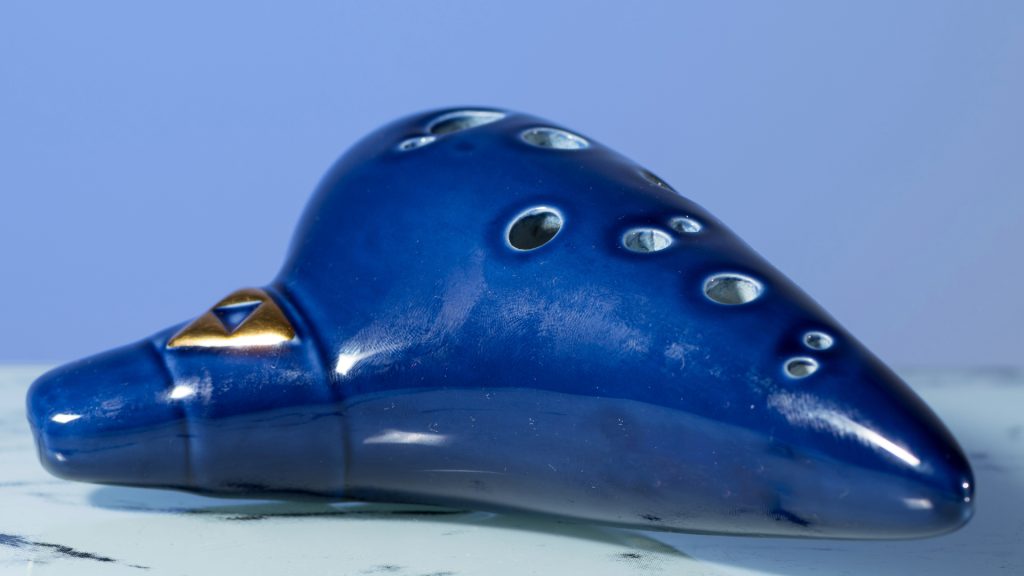
When I first encountered the ocarina, I was curious about its rich heritage and cultural significance. Here’s what I learned:
Historically, the ocarina belongs to a family of ancient wind instruments dating back over 12,000 years. Originating in various regions around the world, from the Italian ‘ocarina’ meaning ‘little goose’, to Mesoamerican cultures that crafted ocarinas in animal shapes.
Folk Music:
The ocarina has been a key instrument in folk music across many cultures.
Its simple form yet soulful sound lends to traditional music, connecting listeners to a region’s cultural roots.
Legend of Zelda:
For many, my introduction to the ocarina was through Nintendo’s ‘The Legend of Zelda: Ocarina of Time’.
This iconic game brought ocarina music to the forefront, showcasing both its magical tones and its capacity to convey a narrative.
Italian Influence:
Italians refined the ocarina in the 19th century to the form more recognized today.
Italian ocarina music is often associated with the instrument’s sprightly and expressive capabilities.
In learning the ocarina, appreciating its historical and cultural layers adds depth to the experience.
This tiny instrument carries a world of stories, from ancient folk tunes to modern gaming soundtracks, each note a reflection of its storied past.
Frequently Asked Questions
In my experience, beginners often have similar questions when starting to learn the ocarina. Here are answers to some of the most common queries:
What are the first steps in learning to play the ocarina?
My first steps were to understand the instrument’s layout and how to hold it properly.
Then, I practiced blowing into the ocarina to produce a steady tone before moving on to fingering techniques to play different notes.
How much time is typically required to become proficient at the ocarina?
The time it took me to become proficient varied. However, with consistent daily practice of about 15-30 minutes, I began to see significant improvement within a few months.
What are some easy ocarina songs for a beginner to start with?
Easy songs I started with include “Mary Had a Little Lamb” and “Twinkle Twinkle Little Star.”
These songs have simple melodies and require limited note ranges which are perfect for beginners.
Are there any specific techniques a beginner should focus on when starting the ocarina?
As a beginner, I focused on learning proper breath control since it is crucial for maintaining an even tone.
Additionally, I worked on basic finger exercises to improve my dexterity and note transitions.
Can you compare the difficulty level of playing the ocarina with other wind instruments?
Comparing the ocarina to other wind instruments, I found it to have fewer holes and a more straightforward fingering system, which in my view makes it easier to learn the basics.
What features should I look for in an ocarina if I’m a complete beginner?
I looked for an ocarina made of plastic as they are less expensive and durable, making them ideal for beginners.
A 4-hole ocarina can be a good start because of its simplicity. Although many beginners might opt for a 12-hole for a full range of notes.
Author Profile
-
Daniel Johnstone is an English writer with a love for stringed instruments from around the world.
He shares his love for these instruments through his writing for folkstrings.com, a website dedicated to all things related to folk string music.
Daniel's passion for music started at a young age, and he has since become an accomplished musician, playing guitar, cavaco, and recently, the harp.
His dedication to learning and sharing his knowledge of stringed instruments is evident in his insightful and engaging blog posts. Whether you're a seasoned musician or a beginner, Daniel's writing is sure to inspire and entertain you.
When he's not playing music or writing, you can find Daniel exploring new instruments and seeking out new sounds to share with his readers.
Latest entries
 OcarinaApril 1, 2024Why Does My Ocarina Sound Bad? Tips for Improved Tone Quality
OcarinaApril 1, 2024Why Does My Ocarina Sound Bad? Tips for Improved Tone Quality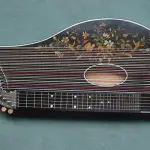 ZitherMarch 30, 2024Who Are Some Famous Zither Instrument Players? Let’s Find Out!
ZitherMarch 30, 2024Who Are Some Famous Zither Instrument Players? Let’s Find Out! ZitherMarch 30, 2024Should I Learn the Zither? Exploring the Benefits of This Unique Instrument
ZitherMarch 30, 2024Should I Learn the Zither? Exploring the Benefits of This Unique Instrument ZitherMarch 30, 2024What is the History of the Zither: Tracing the Strings Through Time
ZitherMarch 30, 2024What is the History of the Zither: Tracing the Strings Through Time
Affiliates:
This post may contain affiliate links that at no additional cost to you, the site may earn a small commission. We only recommend products we would use ourselves and all opinions expressed on this site are our own.
Accuracy Advice:
While we strive to provide up-to-date and accurate information, the content in this article may not reflect the most current research or medical guidelines. We encourage readers to do further research and consult with professionals for more personalized advice.
Our Recommendations:
The products and services mentioned in any of our articles are recommended based on our independent research and personal experience. We are not sponsored by any company. We aim to suggest products and services we believe are of high quality and could be beneficial to our readers.

